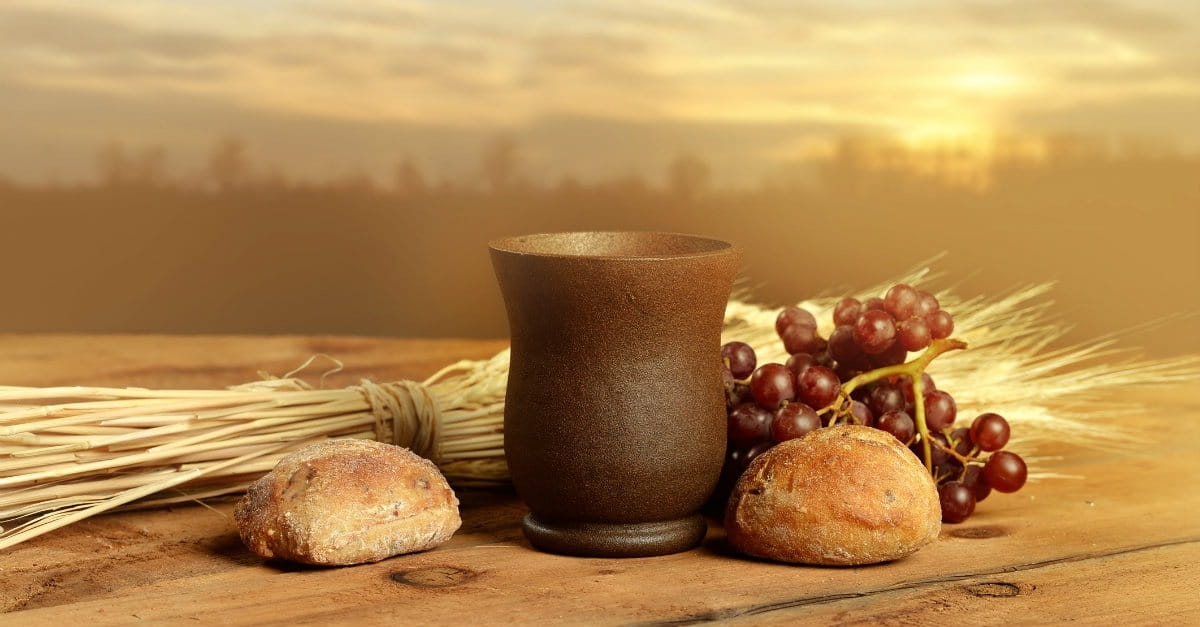Last week I started a discussion about the United Methodist understanding of Communion. (The Bread We Eat) I spoke in broad terms and did not dwell on specifics. I defined what a Sacrament is according to Wesley, “outward sign of an inward grace, and a means by which we receive the same.” And that Sacraments are sign-acts in that there are actions and physical signs. For the Sacrament of Communion, that would be the words spoken and the elements used.
I left you with a long quote from This Holy Mystery: A United Methodist Understanding of Holy Communion, the document written for us to begin to think and pray about what the Sacrament means. The summary of the quote was the Jesus Christ is present in the Sacrament in a real way and not just in a memorial or a reenactment way. That there is a grace received through this Sacrament and that the presence of Jesus is not dependent on our belief in that presence.
The passage we heard this morning from the Gospel of St. John is a continuation of the Bread of Life Discourse of Jesus. Jesus continues with this idea that He is what we need to live forever, not physically since we know that is not possible, but in a spiritual sense. Jesus has this to say:
“Those who eat my flesh and drink my blood abide in me, and I in them.
Just as the living Father sent me, and I live because of the Father, so whoever eats me will live because of me. This is the bread that came down from heaven, not like that which your ancestors ate, and they died. But the one who eats this bread will live forever.”
Now that we have had time to ponder this idea of Jesus being present in the elements let’s expand upon that idea. Again, I am asking you to approach this with an open mind and an open heart.
For most Reformed Protestants, the remembrance or memorial of Communion is the prime meaning that would be recognized. But Holy Communion is much more than that. This is where the idea of grace enters the conversation. God uses the “tangible and material” things that we can see and hear, the words, bread, and wine, as a vehicle for spiritual grace.
As I mentioned last week, Jesus is present in the elements; however, the presence is not physical. We cannot see or touch Jesus, and the physical properties of the bread and wine do not change; what changes are our perspective and our experience of Jesus being present. The presence is an act of God and is objective, and exists independent of human thought. This is a mystery, and it is far beyond our human capacity to understand.
If you are struggling with this idea, welcome to the club. For centuries this has been debated and discussed, and still, there is disagreement about what happens and what it all means. The Wesleyan Tradition that we belong to affirms the reality of the presence of Christ in the Sacrament, but it does not claim to be able to explain it fully.
Some of the best resources for understanding theology are contained in the Hymn Book of the Church. John and Charles Wesley wrote 166 hymns concerning the Sacrament of Communion.
Please turn with me to Hymn #627
O the depth of love divine, the unfathomable grace! Who shall say how bread and wine God into us conveys! How the bread his flesh imparts, how the wine transmits his blood, fills his faithful people’s hearts with all the life of God.
Sure and real is the grace, the manner be unknown; only meet us in thy ways and perfect us in one. Let us taste the heavenly powers, Lord, we ask for nothing more. Thine to bless, ’tis only ours to wonder and adore.’
“In this Holy Meal of the Church, the past, present, and future of the living Christ come together by the power of the Holy Spirit so that we may receive and embody Jesus Christ as God’s saving gift for the whole world.” (THM pg 25)
As much as we welcome all to the Table, there are some requirements. Jesus invites us to the Table. Jesus invites those who love him, repent of their sin, and seek to live as Christian disciples. This is an act of faith on our part. Our response to this invitation is an affirmation of our personal relationship with God and our commitment to the mission and ministry of the Church.
Last week I mentioned that this Table does not belong to me, and it does not belong to you; it does not even belong to the Church. This is the Lord’s Table, and it is a place for sinners and saints. We come to this Table at the invitation of Jesus Christ. We come to this Table in gratitude for the mercy that has been and continues to be shown by Jesus Christ towards sinners. We do not come to this Table because we are worthy; no one is truly worthy. “We come to this Table out of our hunger to receive God’s gracious love, and to receive forgiveness and healing.” (THM pg 30)
For me, the bottom line is this; it does not matter if you believe it is a memorial, a reenactment, or the real presence. It does not matter if you think yourself worthy or not. What matters is that you come to the Table. Taste and see that the Lord is good, for His mercy endures forever.
Amen.

